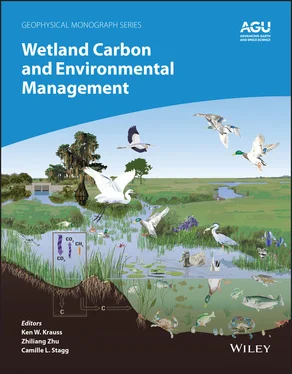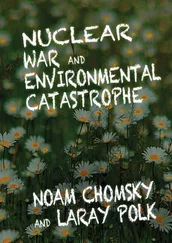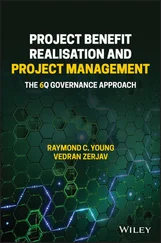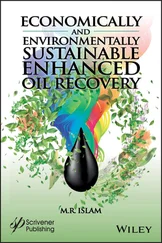( Source : Based on Chmura et al., 2003, and Duarte et al., 2013.)
| Local carbon burial rate (g C/m 2/yr) |
Carbon stock in soil (Mg C/ha) |
Global area (km 2) |
Reference |
| 151 |
|
380,000 |
Woodwell et al. ( 1973 ) |
| 218 (18–1,713) |
|
22,000 |
Chmura et al. ( 2003 ) |
| 218 (18–1,713) |
|
400,000 |
Duarte et al. (2005) |
| 218 ± 24 |
162 |
22,000–400,000 |
Mcleod et al. ( 2011 ) |
| 244.7 |
|
41,657 |
Ouyang and Lee ( 2014 ) |
| 218 (18–1,713) |
|
55,000 |
Mcowen et al. ( 2017 ) |
| Global carbon burial (TgC/yr) |
Global carbon stock in soil (PgC) |
Global carbon burial (reference) |
| 60.4 |
none available |
Duarte et al. (2005) |
| 60.4–70 (max. 190) |
|
|
Nellemann et al. ( 2009 ) |
| 4.8 |
|
|
Mcleod et al. ( 2011 ) |
| 87.3 |
|
|
Mcleod et al. ( 2011 ) |
| 4.8–87.3 |
0.4–6.5 |
|
Duarte et al. ( 2013 ) |
| 10.2 ± 1.1 (0.9–31.4) |
none available |
Ouyang and Lee ( 2014 ) |
| 12 ± 1.3 |
|
|
Al‐Haj and Fulweiler ( 2020 ) |
As highly productive ecosystems (primary production exceeds respiration), tidal salt marshes sequester large amounts of carbon within their underlying sediments, within their living aboveground biomass (leaves, stems) and belowground biomass, including live and dead roots (Chmura et al., 2003; Ouyang & Lee, 2014). Marsh plants further trap and accumulate litter and allochthonous material/carbon from upstream rivers and tidal exchange (Saintilan et al., 2013). Consequently, carbon burial rates and carbon stocks in salt marshes are exceptionally high, exceeding those of terrestrial forests (Duarte et al., 2005a, 2013; Mcleod et al., 2011).
The global net primary production of tidal salt marsh is estimated at 0.01–0.18 PgC/yr (Duarte et al., 2013). Local burial rates vary from 18 to 1,713 g C/m 2/yr with an average of ~230 g C/m 2/yr ( Table 1.1). Global estimates of carbon burial depend on accurate estimates of the global extent of coastal marsh. Historically, there have been high uncertainties associated with the global distribution of salt marsh (Chmura et al., 2003; Duarte et al., 2013), and combined with high variability in local burial rates, this has resulted in a relatively large range of global burial estimates in salt marsh (4.8 to 190 TgC/yr, Table 1.1). With the most recent estimate of mean carbon sequestration rates (245 g C/m 2/yr, Ouyang & Lee, 2014) and the recently updated global salt marsh area of 55,000 km 2by Mcowen et al. (2017) we estimate mean global carbon burial in salt marsh to be 13.5 TgC/yr. Uncertainties of global carbon burial and stocks are due to the small number of measurements from few study sites that are extrapolated to large regions. There are significant data gaps, in particular in South America and South Asia (Ouyang & Lee, 2014).
Important controls on local carbon sequestration rates, decomposition, and stocks include climate and latitude, tidal range, and halophyte genera (Kirwan & Mudd, 2012; Ouyang & Lee, 2014; Holmquist et al., 2018), as well as marsh elevation, i.e., the available accommodation space created by sea‐level rise (Kirwan & Megonigal, 2013; Rogers et al., 2019). Loss of salt marsh habitats and therefore the ability of marsh to capture carbon is predominantly caused by anthropogenic disturbance and land‐use change such as dredging, filling, draining, and construction (annual loss rate of 1–2% between 1980–2000, Duarte et al., 2008). Hurricanes can destroy large areas of marsh and trigger instantaneous losses of sequestered soil carbon (DeLaune & White, 2012). For total salt marsh carbon stock, we only include soil carbon, with an estimate of 0.4 to 6.5 PgC (Duarte et al., 2013).
1.4.3. Tropical Peatlands
In the tropics, areas with year‐round high rainfall, warm temperatures, low nutrient levels (mostly derived only from rainfall), and a topography that favors retention of water, host a unique ecosystem where plant biomass accumulates to form a thick layer of partially decomposed peat. Tropical peatlands cover 243,000–300,000 km 2in Southeast Asia (with the greatest extent in coastal Indonesia), 209,000 km 2in Africa (especially in the Congo Basin), and 131,000–587,000 km 2in the Americas (the large range reflecting uncertainty on what share of these extensive wetlands are peat‐forming systems) (Page et al., 2011; Lähteenoja et al., 2012; Gumbricht et al., 2017; Leifeld & Menichetti, 2018; Xu et al., 2018). Most contemporary tropical peatlands began formation during the Holocene, with rates of C accumulation in the range 30–270 g C/m 2/yr for SE Asian sites (Page et al., 2010; Dommain et al., 2011). Depths of up to 20 m are known for some SE Asian peatlands, but most are in the range 5–7 m. Extensive peatlands on other continents are shallower: average thickness in the Peruvian Amazon is 2–3 m (max. 7.5 m; Lähteenoja et al., 2012; Draper et al., 2014) and 2 m in the Congo Basin (max. 6 m; Dargie et al., 2017). Belowground C density values average 2,775 t C/ha for SE Asia (Page et al., 2011); 2,000 t C/ha for the Congo Basin (Dargie et al., 2017), and 800 t C/ha for Peru (Draper et al., 2014). The largest store of tropical peat C is in SE Asia (69 PgC), followed by 34 PgC in Africa and 13 PgC in the Americas (Page et al., 2011; Dargie et al., 2017). Tropical peatland vegetation is dominated by either hardwood trees, palms, or a combination, and displays some level of zonation based on flooding and nutrient gradients (Anderson, 1961; Lähteenoja et al., 2012; Dargie et al., 2017; Draper et al., 2014). Prior to anthropic disturbance, peatland vegetation stored an estimated 7.1 and 1.4–2.5 PgC in SE Asia and Africa (based on 27–275 t C/ha and 67–124 t C/ha of biomass C, respectively) (Dargie et al., 2017; Wijedasa, 2020). South American peatland extent is uncertain, thereby limiting estimation of aboveground C stocks, but Peruvian peatland biomass stores 80–90 t C/ha (Draper et al., 2014). Compared to belowground C density values, aboveground C density is relatively low, but the vegetation plays an essential role in the formation, maintenance, and protection of below ground C pools.
For conversion to agricultural land uses, waterlogged swamp conditions are artificially drained, and accompanied by nutrient addition and pH control (Wijedasa et al., 2017). Drainage shifts conditions from those favoring slow peat accumulation to ones facilitating rapid decomposition, resulting in C emissions in the range 11–20 t C/ha/yr for peatlands under agriculture (Drösler et al., 2014). Due to rapid land use change, the area of peat swamp forest in SE Asia declined between 1990 and 2015 from 76% to 29% of the area (a loss of 4.6 Mha), with a corresponding increase of 11% to 50% in agricultural area (Miettinen et al., 2017), comprising both small‐scale farms and large‐scale industrial plantations (Wijedasa et al., 2018). In addition, drained peatlands are susceptible to fires that result in further, rapid C release to the atmosphere and life‐threatening air pollution. In Africa, the extensive peatlands of the Congo Basin are relatively intact, although the potential exists for future anthropic disturbance due to a lack of protection (Dargie et al., 2017); elsewhere on the continent, peatland has been exploited for agriculture (e.g., Uganda) and as a fuel source for energy generation (Rwanda). In South America, most Peruvian peatlands remain undisturbed, but as with the Congo peatlands, there is the potential for future disturbance from the development of agriculture and transport infrastructure (Roucoux et al., 2017).
Читать дальше












